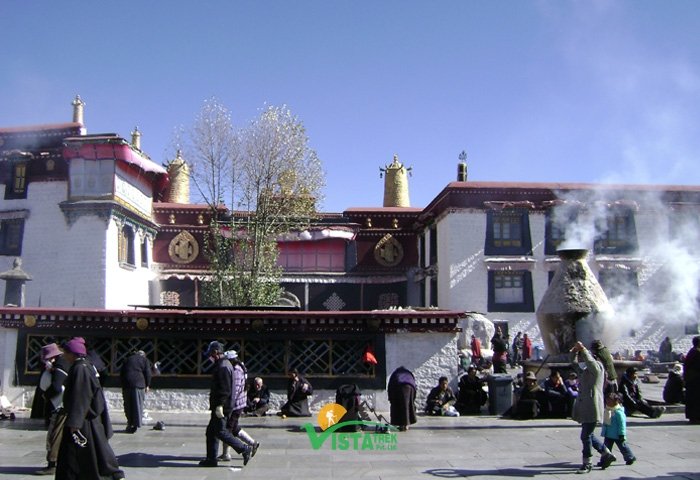Lhasa To Kathmandu: A Cross-Himalayan Cultural Tour

Introduction

The Tibetan Plateau, with an average elevation exceeding 4,500 meters, is a vast and unforgiving landscape of snow-capped peaks, turquoise lakes, and barren plains. For centuries, this remote region has been home to a unique and vibrant culture, influenced by both the nomadic traditions of its indigenous people and the spiritual teachings of Tibetan Buddhism. The Lhasa to Kathmandu tour will take you on an enriching journey through this captivating land, following an ancient trade route that has connected Tibet and Nepal for centuries.

Subtopics with Key Information
Lhasa, Tibet: The Heart of Tibetan Culture
- Potala Palace: The former winter residence of the Dalai Lama, this iconic fortress-monastery is a UNESCO World Heritage Site and a testament to the grandeur of Tibetan architecture.
- Jokhang Temple: The most sacred temple in Tibet, Jokhang is believed to have been built in the 7th century and houses the revered Jowo Shakyamuni statue.
- Barkhor Street and Circuit: This bustling street encircles the Jokhang Temple and is lined with pilgrims, vendors, and shops selling religious artifacts and souvenirs.
- Sera, Drepung, and Ganden Monasteries: The “Three Great Monasteries” are located on the outskirts of Lhasa and are renowned for their vast courtyards, intricate artwork, and vibrant monastic communities.
Shigatse, Tibet: The Second City of Tibet
- Tashilhunpo Monastery: The second-largest monastery in Tibet, Tashilhunpo is the traditional seat of the Panchen Lama, the second-highest spiritual authority in Tibetan Buddhism.
- Yungbulakang Palace: A historic fort located on a hill overlooking Shigatse, Yungbulakang offers stunning views of the surrounding countryside.
- Sakya Monastery: One of the oldest and most important monasteries in Tibet, Sakya is known for its collection of ancient Buddhist scriptures.
- Mount Everest Base Camp: While it’s not directly on the Lhasa to Kathmandu route, a side trip to Mount Everest Base Camp is possible for those seeking a once-in-a-lifetime experience.
Gyantse, Tibet: A Trading Hub in the Himalayas
- Gyantse Dzong: A fortress perched on a hilltop, Gyantse Dzong played a key role in the defense of Tibet from British and Gorkha invasions.
- Pelkor Chode Monastery: This hilltop complex houses numerous temples, chapels, and a renowned collection of murals depicting Tibetan history and religious scenes.
- Khumbum Stupa: Known locally as the “Holy Victory Stupa,” this magnificent monument is adorned with thousands of niches containing small stupas.
- Yangpachen Hot Springs: Located near Gyantse, these natural hot springs offer a relaxing and rejuvenating experience amid the Tibetan wilderness.
The Himalayan Pass: Crossing the Roof of the World
- Pang La Pass: The highest point on the Lhasa to Kathmandu route (5,248 meters), Pang La Pass offers breathtaking views of the surrounding peaks.
- High Altitude Landscapes: The journey across the Himalayas involves trekking through barren plains, alpine meadows, and dramatic mountain passes.
- Wildlife: Keep an eye out for Tibetan antelope, yaks, and other wildlife that inhabit the remote Tibetan Plateau.
- Acclimatization: Acclimatization to the high altitude is crucial for a successful crossing of the Himalayas.
Kathmandu, Nepal: A Cultural Tapestry
- Kathmandu Valley: A UNESCO World Heritage Site, the Kathmandu Valley is home to seven historic monument zones, including Durbar Squares, ancient temples, and sacred stupas.
- Pashupatinath Temple: One of the holiest Hindu pilgrimage sites in Nepal, this riverside temple complex is dedicated to Lord Shiva.
- Swayambhunath Stupa: Perched on a hill overlooking Kathmandu, this iconic stupa is popularly known as the “Monkey Temple” due to the resident monkeys that roam the grounds.
- Thamel: The bustling tourist center of Kathmandu, Thamel is a maze of shops, restaurants, and guesthouses,